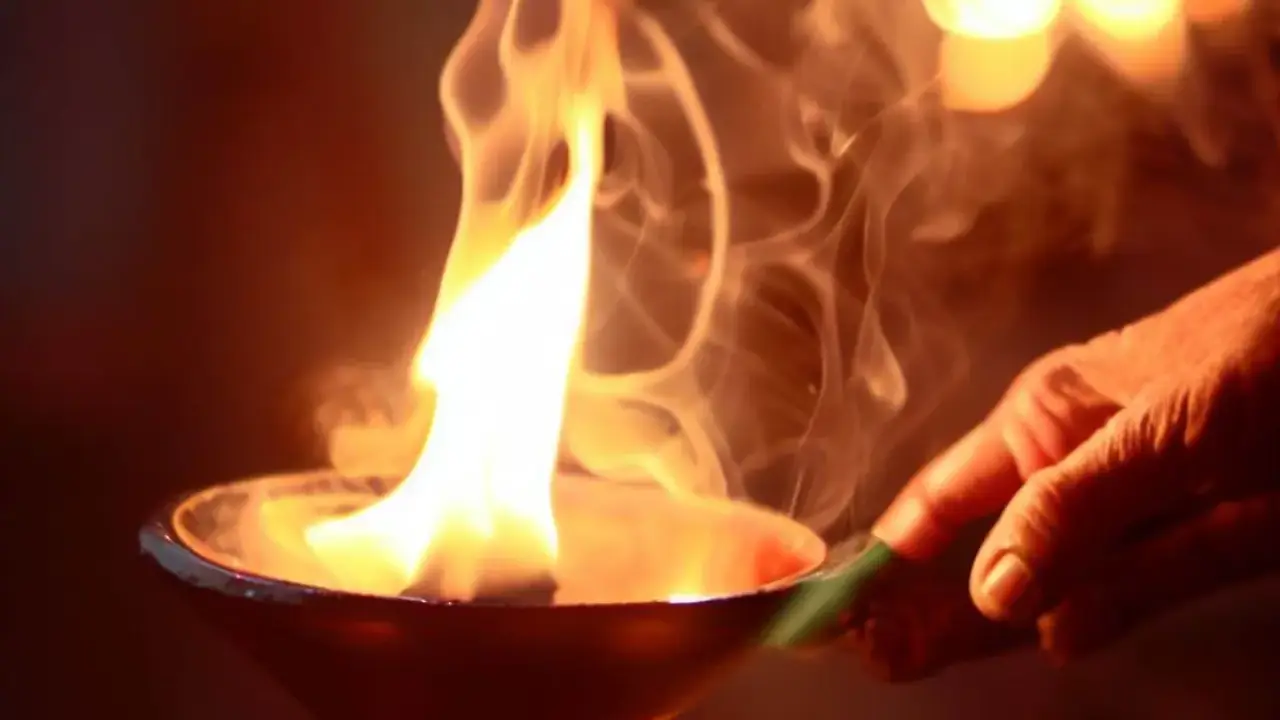The Aarti ritual is a time-honored tradition deeply ingrained in Hindu temple worship. Rooted in ancient customs and spiritual symbolism, this luminous practice holds immense significance in connecting devotees with the divine. Through the rhythmic waving of lamps and the enchanting hymns, the Aarti ritual evokes a sense of reverence and devotion, fostering a profound spiritual experience.
Understanding the Aarti Ritual: An Illuminating Journey
The Essence of Aarti: Embracing the Divine Light
At the core of the Aarti ritual lies the concept of “Aa” (meaning “towards”) and “Rati” (meaning “the highest love for God”). This amalgamation symbolizes the act of moving towards God with utmost love, devotion, and surrender. The Aarti lamp, lit with a cotton wick soaked in ghee or oil, epitomizes the presence of the divine and the dispeller of darkness.
A Melody of Devotion: Enchanting Hymns
Aarti is accompanied by melodious hymns, bhajans, and mantras sung in praise of the deity. These soul-stirring verses not only resonate through the temple walls but also reach the innermost corners of the heart. The collective singing creates an ambiance of unity, harmony, and spiritual upliftment.
The Symbolism of Gestures: Connecting with the Divine
As the devotees offer the Aarti, the circular movement of the lamp in front of the deity symbolizes the cyclical nature of life, death, and rebirth. The incense sticks represent the ethereal presence of the divine. While the ringing bells dispel negative energies and invite positive vibrations. The fragrance of the incense signifies the subtleness of spirituality.
Awakening the Senses: An Immersive Experience
The Aarti ceremony aims to awaken the devotee’s senses. The visual delight of the brightly lit lamps, the auditory treat of soulful hymns, the lingering aroma of incense, and the tingling sensation of the bell’s sound, all converge to create an immersive and uplifting experience for the worshippers.
The Sacred Rhythm of the Aarti: A Connection with the Divine
Spiritual Cleansing: Dissipating Negative Energies
Aarti is believed to cleanse the temple and its surroundings of any negative energies. The light from the Aarti lamp is considered to purify the atmosphere, creating an environment conducive to spiritual pursuits and inner peace.
Communion with the Divine: Building a Personal Relationship
Through the Aarti ritual, devotees forge a personal connection with the deity. As they gaze into the eyes of the divine form, they feel an intimate dialogue taking place beyond words, a silent exchange of love and devotion.
Overcoming Ego: Surrendering to the Divine Will
Aarti serves as a humbling reminder to surrender one’s ego and desires to the divine will. The act of offering the lamp symbolizes selflessness. It signifies that just as the lamp burns itself to give light, so should the devotee give without seeking anything in return.
Celebrating Festivals: The Aarti Ritual as the Heart of Devotion
During Hindu festivals, the Aarti ritual reaches its pinnacle. The grand celebrations witness devotees coming together, transcending barriers of caste, creed, and social status. Festivals like Diwali, Navratri, and Krishna Janmashtami see temples adorned with lights and colors, resonating with joyous Aarti ceremonies that unite hearts in a collective devotion.
Conclusion: The Luminous Path to Spiritual Fulfilment
The Aarti ritual in Hindu temple worship illuminates the path to spiritual fulfilment. It offers a profound experience of connection with the divine. Its significance lies not only in the symbolism of the Aarti lamp and its gestures but also in the collective devotion and harmony it fosters among the worshippers. The Aarti ceremony transcends time, bringing devotees closer to the essence of Hindu spirituality. It helps them in embracing the guiding light that leads them on their spiritual journey.

